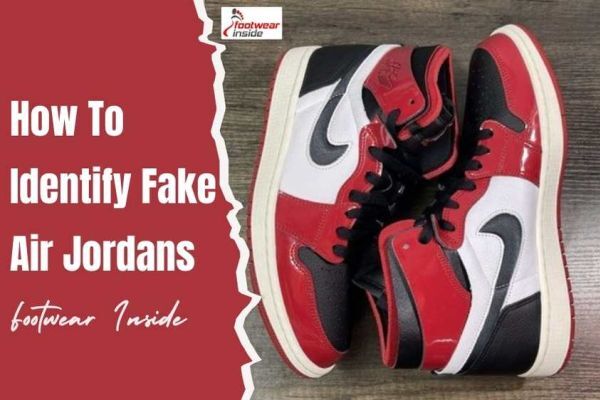Converse is a popular American footwear brand. Converse is acclaimed for its aesthetic appearance and quality. But many Converse users and potential buyers are curious and ask where is Converse made?
Before 2001, Converse was made in America. But now these are made in Taiwan, Thailand, Malaysia, Pakistan, Vietnam, India, China, Indonesia and overseas of Asia. Getting a “made in America” Converse is a rare item now.
In this guide, we will talk about where Converse is made, a brief history of Converse production, and where Converse sold. So, let’s begin.
Where is Converse made?
Converse doesn’t want to inform their customers about the original production centers. So, they don’t mention any country of origin with products. But it has been seen with research that Converse is mainly designed in Boston, Massachusetts. And manufactured in multiple Asian countries like China, Vietnam, India, Indonesia, Thailand and Malaysia.
![Where is Converse made? [History] 1 Where is Converse made](https://footwearinside.com/wp-content/uploads/2023/06/Where-is-Converse-made.jpg)
The Converse brand focus on craftsmanship, innovation, and style to design its products. Then these are produced in several countries. Keep note that the quality of products is similar across the board. Converse maintain the high quality of all of its products.
Synthetic and natural materials are combinedly and used in Converse sneakers. Rubber, foam, thermoplastic and elastomers make Converse comfortable and durable. On the other hand, they use leather and canvas material for making the upper and outsoles.
Also, Converse has delivered their manufacturing projects to around 172 countries. They have done it for the convenience of local raw material procurement. But you get the same product quality no matter where it’s manufactured because Converse doesn’t compromise quality.
A Brief History of Converse Production
The journey of the Converse brand was started by Marquis Mills in 1908. Marquis was a professional rubber researcher who wanted to start a business with rubber. So, he first started to research rubber collecting and processing for making tennis footwear. Later they used vulcanization technology and made durable rubber soles.
![Where is Converse made? [History] 2 A Brief History of Converse Production](https://footwearinside.com/wp-content/uploads/2023/06/A-Brief-History-of-Converse-Production.jpg)
Keep note that this was popular for making basketball shoes till 1923. Later they produced basketball shoes in 1918 and became popular for that. Then Converse shoes became incredibly popular during the 1950s and 1960s. But in the 1970s, Converse had to contend with upstart footwear brands Nike, Puma and Adidas.
Unfortunately, Converse collapsed in the 1980s to 1990s. Finally, in 2001, the production of Converse in America was stopped. At the same time, they started to be produced in different Asian countries.
After that, NIKE bought the Converse brand in 2003. Nike worked on it for 10 years and continued its production in Asian countries. By 2015, Converse was revived and almost became a multi-billion-dollar business. Since then, the Converse brand has never looked back.
Where are Converse high tops made?
Let’s know where are converse high tops made. Converse high-top shoes are made in various Asian countries over the world. But the original design comes from the USA. Like other Converse models, the high tops are made in the United States, China, Vietnam, Indonesia, India, and Thailand. However, the manufacturing location may change depending on the design, raw materials and design. Now, Converse has become popular all over the world.
![Where is Converse made? [History] 3 Where are Converse high tops made](https://footwearinside.com/wp-content/uploads/2023/06/Where-are-Converse-high-tops-made.jpg)
Since Converse is well-known as a global brand, the manufacturing location may change anytime, depending on the requirements.
Where are Converse sold?
![Where is Converse made? [History] 4 Where are Converse sold](https://footwearinside.com/wp-content/uploads/2023/06/Where-are-Converse-sold.jpg)
Official Converse Stores:
Converse has an official website for online selling. You will get high-tops, low-tops and varieties of stylish Converse sneakers in their store. Besides, they have stores in many countries.
Shoe Retailers:
Converse are sold in multiple online and offline shop retailers. So, find out any reputed shoes where different branded shoes are available.
Online Retailers:
Converse shoes are sold at online retailers like Amazon, Zappos, and the official Converse website.
Sporting Goods Stores:
Converse are sold in several sports goods selling store like Foot Locker and JD Sports.
Department Stores:
Converse is also sold in a larger department store like Macy’s, Nordstrom, and Kohls.
Where is Converse’s headquarters?
Do you concern that where is converse headquarters? the Converse headquarters is situated in Boston, Massachusetts, United States. Converse has rarely been made in America since being owned by Nike. But NIKE continued to make the Converse design in the headquarter. However, the headquarters in America does not carry out any production. From the headquarters, the original designs and styles are sent to various Asian countries. Asian countries produce these with their raw materials.
FAQs:
How do I know if my Converse are fake?
You need to check the Chuck Taylor patch. So, look at the patch closely and notice if there have a blue star with a trademark symbol. If you don’t see anything like this, make sure your pair is fake. Besides, you can check the insoles and tongue of your Converse. The real pair exists with “All-Star” on the soles and tongue.
Which country made Converse?
At the beginning of production, It was only made in the USA. But currently, Several Asian countries are making a wide range of Converse. For example, China, Vietnam, Indonesia, India, Pakistan and Thailand produce Converse.
What is the original Converse?
The original Converse have some features. They have sturdy stitches at the upper. The Converse stitching color would be white. These don’t make from tonal colors, monochrome and ivory. The rubber pipe painting is durable and straight.
Final Words:
Do we have you now aware of Where are Converse made? Converse’s original design comes from the US but is made in Asian countries Taiwan, Thailand, Malaysia, Pakistan, Vietnam, India, China, and Indonesia. The Converse manufacturing location may change depending on the demand for shoes and the availability of raw materials.



![How To Identify Nike Shoe Model [Easy Ways]](https://footwearinside.com/wp-content/uploads/2023/07/How-To-Identify-Nike-Shoe-Model-Easy-Ways.jpg)
